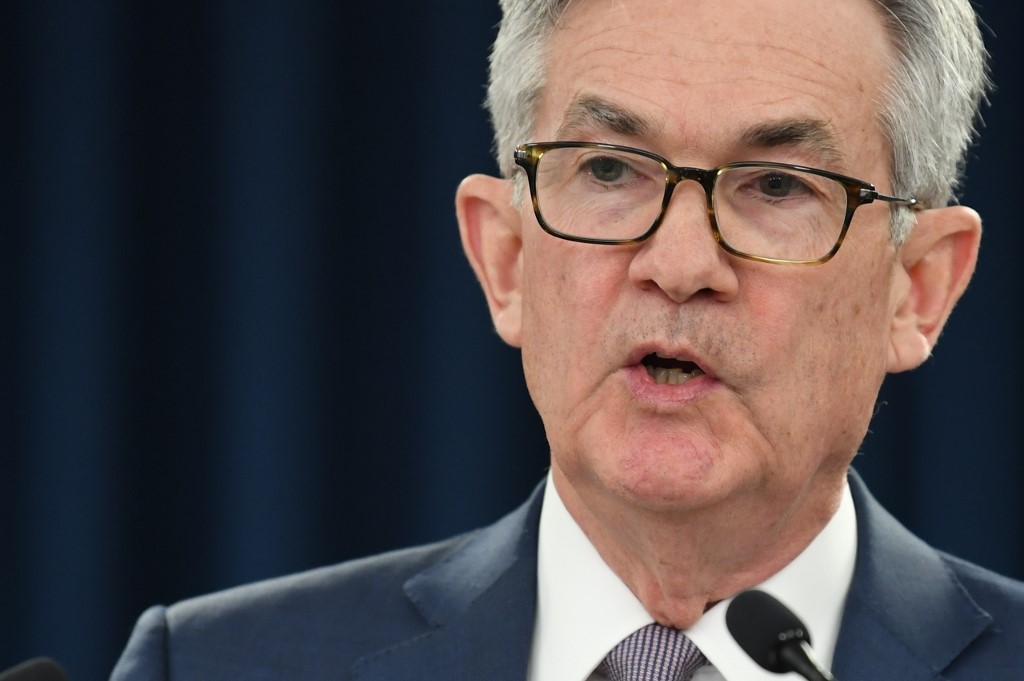(ATF) The Federal Reserve painted a grim picture for the world’s largest economy at its meeting on Wednesday, slashing US growth projections for the current year, but said it will do “whatever we can” to help the recovery from the coronavirus pandemic while upgrading the expansion forecast for 2021.
The US economy was projected to shrink by 6.5% in 2020 before recovering to 5% in 2021. In an earlier forecast made in December, it had projected a 2% expansion in 2020 and 1.9% growth in 2021.
The Fed kept rates unchanged, maintaining the target range for the federal funds rate at 0 to 0.25%, while saying the ongoing public health crisis will weigh heavily on economic activity, employment, and inflation in the near-term, and posed considerable risks to the economic outlook over the medium-term.
“There is great uncertainty about the future,” Powell said in the post-meeting media conference.
“We are strongly committed to using our tools to do whatever we can, and for as long as it takes, to provide some relief and stability, to ensure that the recovery will be as strong as possible, and to limit lasting damage to the economy.”
The median forecast of FOMC members shows they expect the key rate to stay the same through 2022 at least, before edging back up near 2.5% over the longer-term. Only two central bankers projected the rate would rise off zero in 2022.
“The FOMC hit the bull’s eye today in terms of delivering exactly what the market was expecting, no more, no less. The key message of lower for longer, reiterated by the dot plot, suggests interest rates are locked near the zero bound through the forecast period to 2022. Notably, their forecast shows GDP falling 6.5% this year, before almost erasing those losses with an expansion of 5% in 2021,” Seema Shah, Chief Strategist at Principal Global Investors, said.
“Would that be termed a V-shaped recovery? It looks more like a Nike swoosh to me, but the important takeaway is that, even with a relatively quick recovery, only two members would vote for a hike in 2022.”
The Fed’s economic projections showed unemployment falling to 9.3% by the end of the year from its current 13.3%.
Despite nearly two million cases and 112,000 deaths from Covid-19 in the US, there is evidence the economy may be rebounding from its bottom.
20 million out of work
The employment report last week showed that 2.5 million jobs were added in May, but more than 20 million people were still out of work.
As a result, the FOMC will keep the key rate at zero “until it is confident that the economy has weathered recent events and is on track to achieve its maximum employment and price stability goals.”
When he was asked about the chance that the Fed could surprise hawkishly if the economy surprised positively, Powell emphasised: “We’re not thinking about raising rates, we’re not even thinking about thinking about raising rates.”
The median forecast of FOMC members shows they expect the key rate to stay the same through 2022 at least, before edging back up near 2.5% over the longer-term. Only two central bankers projected the rate would rise off zero in 2022.
However, they expect a solid economic rebound in 2021, with growth of 5% that would then slow to 3.5% in 2022.
Get people working
Powell cautioned that “the path of the economy is highly uncertain.”
While the May jobs report was “probably the biggest data surprise that anybody can remember,” he noted that tens of millions of people remain out of work.
“Somehow, we’ve got to all, as a country, get those people back to work. They didn’t do anything wrong. This was a natural disaster,” Powell told reporters, pledging that the Fed would “use all our tools” to get back to full employment.
He declined to comment on what steps Congress should take, but said, “It’s possible that we will need to do more, and it’s possible that Congress will need to do more.”
The Fed also said it will continue to work to ensure households and businesses have access to credit by continuing to purchase Treasury bonds and mortgage-backed securities at its current rate.
Fed Chair Jerome Powell said after the meeting that the programs are “providing financing where not otherwise available,” and also increasing the willingness of private lenders to offer credit.
The Fed will continue to use its tools “forcefully, proactively and aggressively until we are confident that we are fully on the road to recovery,” he told reporters.
The central bank already cut rates to zero in March as the crisis began and has been pumping trillions of dollars into the economy – essentially printing money.
This week, it again expanded its planned Main Street Lending Program for small- and medium-sized businesses, which Powell said was the result of continued feedback from potential borrowers, and will make the program more effective.
with reporting by AFP
























